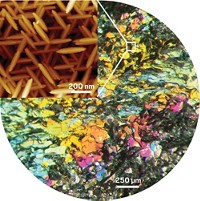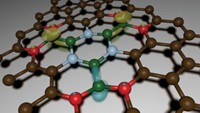Advertisement
Grab your lab coat. Let's get started
Welcome!
Welcome!
Create an account below to get 6 C&EN articles per month, receive newsletters and more - all free.
It seems this is your first time logging in online. Please enter the following information to continue.
As an ACS member you automatically get access to this site. All we need is few more details to create your reading experience.
Not you? Sign in with a different account.
Not you? Sign in with a different account.
ERROR 1
ERROR 1
ERROR 2
ERROR 2
ERROR 2
ERROR 2
ERROR 2
Password and Confirm password must match.
If you have an ACS member number, please enter it here so we can link this account to your membership. (optional)
ERROR 2
ACS values your privacy. By submitting your information, you are gaining access to C&EN and subscribing to our weekly newsletter. We use the information you provide to make your reading experience better, and we will never sell your data to third party members.
Environment
Metal Mesh Enables Dust Scrutiny
Nickel screen traps dust particles, holding them in place for interrogation
by Jyllian Kemsley
March 5, 2012
| A version of this story appeared in
Volume 90, Issue 10
Trapping individual dust particles in the holes of a metal mesh provides a new way to study their physical and chemical properties (J. Phys. Chem. Lett., DOI: 10.1021/jz300057z). Understanding the interplay of chemical identity, size, shape, and crystallinity of airborne particles is of particular interest in health, because such particles cause respiratory and cardiovascular disease, as well as in environmental research, because they affect weather and climate. A group led by James V. Coe at Ohio State University used a nickel screen to trap individual dust particles in 5-µm-wide square holes. When irradiated, the conducting electrons of the metal mesh develop surface waves, or surface plasmon polaritons, which enable collection of the particle’s infrared spectrum to determine its chemical composition. The same particle’s size, shape, and crystallinity can be determined by scanning electron microscopy. Studying laboratory dust, Coe and colleagues found that the dust contains variable amounts of carbonate minerals, clays, sulfates, nitrates, and organic matter (J. Phys. Chem. C, DOI: 10.1021/jp205383h). The researchers now plan to create a library of spectra of pure, single-component particles to enable study of other dusts.





Join the conversation
Contact the reporter
Submit a Letter to the Editor for publication
Engage with us on Twitter